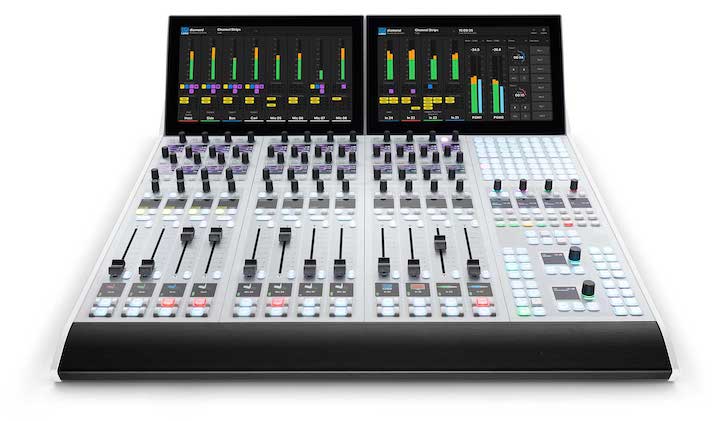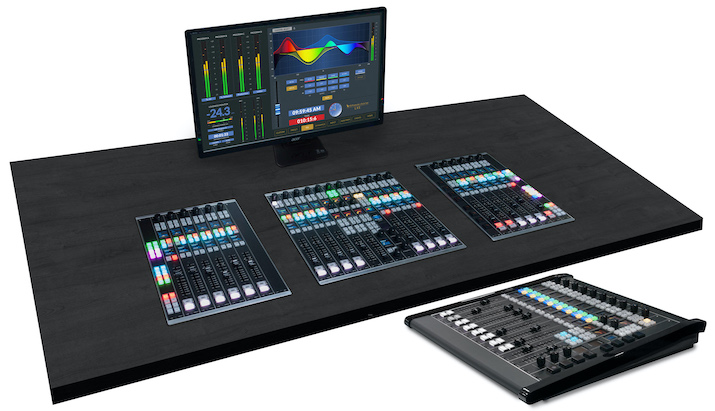Tech Focus: Sports Radio, Part 1 — Long Ahead of TV in Broadcast Technology
IP, REMI, DSP have been deployed for 10 years; production development’s going strong
Story Highlights
By the time sports made it to television — when NBC carried a Columbia-Princeton baseball game at Baker Field on May 17, 1939, to the 400 or so sets then capable of receiving it — radio was already the sports-media veteran. Eighteen years earlier, Pittsburgh’s KDKA had broadcast a boxing match between Johnny Dundee and Johnny Ray at Pittsburgh’s Motor Square Garden, launching what has become a $30 billion business in the U.S., $350 billion globally.
Sports radio has taken a back seat to television much of the time, kept alive in cars (mainly in the front seats, Meatloaf songs notwithstanding) and other venues. But, in the last decade or so, radio was developing and implementing workflows that prefigured what sports television would encounter more recently.
“Every installation we’ve done in the last 10 years has been IP-based,” says Phil Owens, senior sales engineer, Wheatstone. “Ten years ago, it was just about connecting devices within the facility over common Ethernet, on platforms like our Blade product,” a reference to the interface for the console and systems manufacturer’s WheatNet-IP AoIP protocol. “But radio was doing that before television. It was ready for REMI, for hybrid work models, before television had to move there because of budgets and then COVID. The console that used to be the hub for all of the audio sources is now part of a distributed-mix system that ranges from the broadcast facility to people’s home studios. Radio was ready for IP.”

Lawo diamond modular broadcast console for radio on-air, production, MCR, remote control, and remote production.
Johan Boqvist, senior product manager, radio, Lawo, asserts that radio is ahead of television when it comes to audio capture and processing.
“Not so long ago, digital-signal processing was an exotic technology that only the largest media houses were able to afford,” he says. “Today, DSP is readily available; it’s what you use it for that matters. For instance, our newest broadcast consoles for TV and radio have assistive-mixing features that help sports coverage on radio sound just as good as, if not better than, that on TV.”
In fact, Boqvist contends, “an IP infrastructure is simply assumed” now in many, if not most, cases for both radio and television.
“Further innovation will come, I think, on the delivery side of things,” he adds. “Consumers are now used to an on-demand world, television has seen viewing patterns shift dramatically from OTA to OTT delivery, and this parallels the rise in on-demand delayed playback. But TV shouldn’t have a monopoly on this; sports-radio listeners are overwhelmingly made up of mobile, outdoor, or at-work listeners. On-demand playback for radio broadcasts of major sporting events could be a lucrative addition to broadcasters’ developing library of online streaming services.”
‘Well Ahead of the Game’
Calrec has made substantial bets on IP for its consoles and other products. In radio, the cornerstone is the Type R modular, expandable, IP-based mixing system that integrates networking hardware and soft panels, and ties in with the Calrec Assist remote interface for mixing in the cloud.

Calrec Type R IP-based mixing system integrates networking hardware and soft panels, ties in with the Calrec Assist for mixing in the cloud.
“Focused on the Type R,” says Henry Goodman, director, product development, Calrec, “we’ve been adding new [products] that can work on the same networks, such as a new GPIO box that allows GPIs and GPOs [automation circuits for interfacing with external systems, such as playout, phone systems, codecs; for example, a video switcher that can open and close the fader associated with the mic local to a camera] over an AoIP network, as well as third-party devices. The goal is to increase connectivity to support remote production.”
And that leads back to radio, he says, because radio prefigured television’s embrace of such techniques as REMI long before the pandemic. The traditional radio workflow was “well ahead of the game” compared with television, he says, because of radio’s historical reliance on external feeds and other sources. In fact, he adds, radio continues to push technology in this direction, with virtualization encouraging the move to cloud-based centralized playout servers for content and live feeds.
“We provide the ability to plug into that wide-area infrastructure, via IP or through codecs or other dedicated connections,” Goodman says. “When [broadcast] networks have their own IP infrastructure between locations, managing a 2110 network over that is much easier. Such centralization helps radio networks achieve more-efficient workflows but, at the same time, maintain the very localized nature of radio, especially sports radio, and the advantages that brings to broadcasters.”
New Products for Radio
For a 100-year-old medium, radio is still pretty spry and continues to spark product development, most recently on IP-based platforms.

Wheatstone LXE programmable control surface can be scripted to execute every function of the WheatNet-IP infrastructure.
Owens notes Wheatstone’s newest related product, the LXE, which he calls “our most programmable control surface” in either hardware or virtual form and which can be scripted to execute every function of the entire WheatNet-IP infrastructure at a facility.
This year, Lawo introduced its Radio Software Version 7.1 and the RƎLAY Virtual Radio Software v4.4 upgrade. Release 7.0 coincides with the release of diamond, Lawo’s newest mixing console for radio on-air, production, MCR, remote-control, and remote-production applications.
Meanwhile, Calrec has introduced two supporting products to the range of IP devices for its Type R. The Talent Panel providing guests to selected sources from the network with “cough” and talkback facilities. The GPIO unit provides 32 GPOs and 32 GPIs for integration with external systems, such as playout, phone systems, and codecs.
Despite numerous obituaries, radio remains a major-league medium for sports. Cassette and CD players have come and gone from automotive dashboards, but the radio remains in place and sounding better than it ever has. It’s the one medium that will get you to the game when traffic won’t let you.
“It’s certainly exciting to watch sports on TV, but radio is accessible and acceptable in locations where TV is not,” says Lawo’s Boqvist. “And sports radio done well, with dynamic, knowledgeable personalities, commands the attention of the listener in a way no other media can.”
